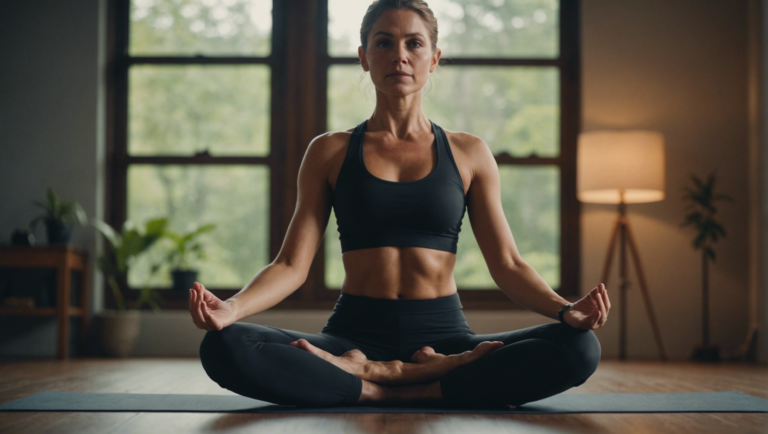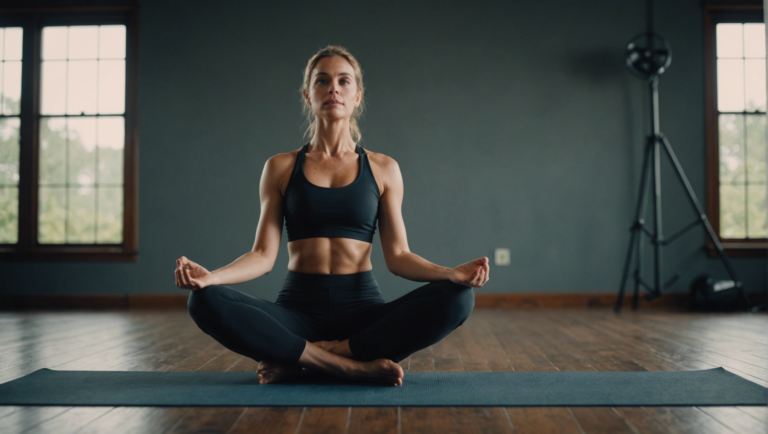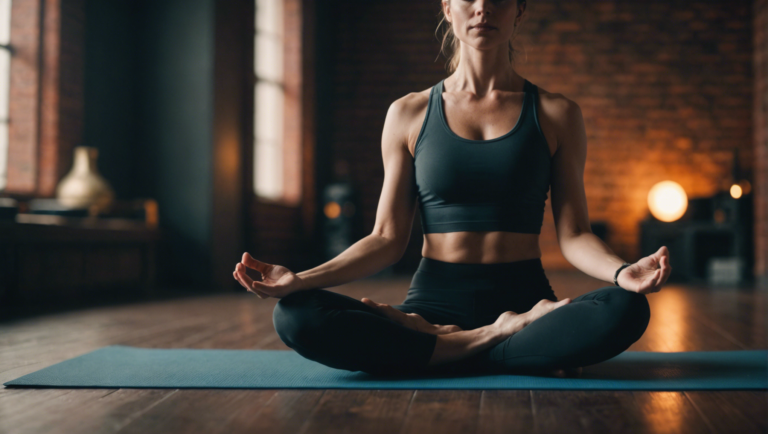Essential Guide: What To Bring To Your Yoga Class
Essential items to pack for your yoga class
Packing for your yoga class efficiently can enhance your overall experience and ensure you have everything you need to make the most of your practice. Here is a guide outlining the essential items you should consider bringing with you to your yoga class.
Comfortable Clothing
Wearing comfortable clothing that allows you to move freely is crucial for your yoga practice. Opt for breathable fabrics like cotton or moisture-wicking materials to help you stay cool and comfortable during your class. Choose clothing that is not too loose to avoid any distractions during different poses.
Yoga Mat
A quality yoga mat is a must-have for any yoga class. It provides you with a stable surface to practice on and helps cushion your joints during poses. Look for a mat that is the right thickness for your comfort and provides good grip to prevent slipping.
Towel
Bringing a towel to your yoga class is essential for wiping away sweat and enhancing your grip on the mat. You can use a regular towel or invest in a specially designed yoga towel that is typically more absorbent and slip-resistant.
Water Bottle
Staying hydrated is key to a successful yoga practice. Remember to pack a water bottle to keep yourself hydrated throughout your class. Opt for a reusable bottle to reduce waste and stay environmentally friendly.
Props
Depending on the type of yoga class you are attending, props such as blocks, straps, or bolsters may be beneficial. These tools can help you improve your alignment, deepen stretches, and provide support in challenging poses. Check with your instructor or yoga studio to see if any props are required for your class.
Personal Items
Don’t forget to pack any personal items you may need during or after your class, such as a hair tie, skincare products, or any medications you may require. Keeping these items handy can help you stay comfortable and focused on your practice.
Snack
If you have a long day ahead or tend to get hungry after your workout, consider packing a light and healthy snack to enjoy after your yoga class. This can help replenish your energy levels and keep you feeling satisfied post-practice.
Positive Attitude
Remember to bring a positive attitude and an open mind to your yoga class. Yoga is not just about the physical practice but also about connecting with your breath, body, and mind. Approach your class with a sense of mindfulness and gratitude for the opportunity to practice.
By packing these essential items for your yoga class, you can set yourself up for a successful and enjoyable experience on the mat. Remember to tailor your packing list to your specific needs and preferences to make the most of your yoga practice.
Benefits of bringing your own yoga mat
Yoga is a practice that offers a myriad of physical, mental, and emotional benefits. Whether you are a seasoned yogi or just beginning your journey, bringing your own yoga mat to class can significantly enhance your overall experience. In this article, we will explore the many advantages of using your own mat during yoga sessions.
Personal Hygiene and Cleanliness
One of the most significant benefits of bringing your own yoga mat to class is personal hygiene. Yoga mats provided by studios are often used by multiple people throughout the day, increasing the risk of bacteria and germs. By using your own mat, you can ensure that you are practicing on a clean surface free from sweat, dirt, and other contaminants. This not only protects your health but also promotes a sense of cleanliness and well-being during your practice.
Comfort and Familiarity
Each yoga mat has its own unique texture, thickness, and grip. By bringing your own mat to class, you can practice on a surface that you are familiar and comfortable with. This familiarity can enhance your overall practice by providing stability and support during various poses and movements. Additionally, using your own mat allows you to customize it to meet your specific preferences, such as adding extra cushioning or using a non-slip towel for added grip.
Spiritual Connection
Yoga is not just a physical practice but also a spiritual journey. Many practitioners view their yoga mat as a sacred space where they can connect with their inner selves and the universe. By bringing your own mat to class, you can deepen this spiritual connection and create a sense of continuity in your practice. The energy and intention that you infuse into your personal mat can enhance the overall spiritual experience of your yoga practice.
Eco-Friendly Choice
Opting to bring your own yoga mat to class is also an eco-friendly choice. Many yoga mats available in studios are made from synthetic materials that are harmful to the environment. By investing in a high-quality, sustainable mat that you can reuse for years to come, you are reducing your carbon footprint and contributing to a more sustainable planet. Eco-friendly mats made from natural materials like rubber, cork, or jute are not only better for the environment but also offer superior grip and durability.
Cost-Effectiveness
While purchasing your own yoga mat may require an initial investment, it can save you money in the long run. Many studios charge a rental fee for the use of their mats, which can add up over time. By bringing your own mat to class, you can avoid these rental fees and have a long-lasting yoga companion that accompanies you on your wellness journey. Additionally, investing in a high-quality mat can prevent injuries and provide the necessary support for your practice, ultimately saving you money on potential medical expenses.
Bringing your own yoga mat to class offers a wide range of benefits, from personal hygiene and comfort to spiritual connection and sustainability. By investing in a mat that reflects your individual needs and values, you can enhance your yoga practice and deepen your overall experience on and off the mat. Start reaping the benefits of using your own yoga mat today and take your practice to new heights.
Choosing the right clothing for a yoga session
Choosing the Best Yoga Attire for Optimal Comfort and Performance
When attending a yoga class, selecting the appropriate clothing is essential for ensuring a comfortable and productive session. The right attire will allow you to move freely, maintain focus on your practice, and enhance your overall experience. Here is a comprehensive guide to help you choose the perfect clothing for your next yoga session.
Prioritize Comfort and Functionality
Comfort should be the primary consideration when choosing clothing for yoga. Opt for breathable fabrics that allow for ease of movement such as cotton, bamboo, or moisture-wicking materials. These fabrics will help absorb sweat and keep you comfortable throughout your practice. Additionally, select clothing that fits well and does not restrict your movements in any way.
Choose Moisture-Wicking Fabrics
During a yoga session, it is common to sweat as you move through various poses and sequences. To stay dry and comfortable, opt for moisture-wicking fabrics that draw sweat away from your body. This will help regulate your body temperature and prevent any discomfort caused by wet, clingy clothing.
Select the Right Fit
When it comes to yoga clothing, the fit is crucial. Choose items that are neither too loose nor too tight. Your clothing should allow you to move freely without any restrictions. A good rule of thumb is to opt for form-fitting tops paired with slightly loose bottoms, such as leggings or yoga pants. This combination offers both support and flexibility during your practice.
Mindful of Transparency
Certain yoga poses require bending and stretching, which can sometimes lead to transparency in your clothing. To avoid any wardrobe malfunctions, opt for opaque fabrics that provide ample coverage. Before purchasing yoga attire, do a quick bend-and-squat test in the dressing room to ensure that the clothing remains opaque even in the most challenging poses.
Layer Up for Versatility
Layering is key, especially if you are attending a yoga class in a studio with varying temperatures. Start with a moisture-wicking base layer, add a long-sleeve shirt or light jacket that can be easily removed if you get too warm, and finish with breathable leggings or shorts. By layering your clothing, you can adjust your outfit to ensure comfort throughout the entire class.
Incorporate Mindful Design Features
When selecting yoga attire, consider items with mindful design features that enhance your practice. Look for pieces with flat seams to prevent chafing, high-waisted bottoms for added coverage during inversions, and tops with built-in bras for extra support. These thoughtful design elements can make a significant difference in your comfort and confidence during yoga sessions.
Choosing the right clothing for your yoga practice is a personal decision based on your preferences and needs. By prioritizing comfort, functionality, fit, and mindful design features, you can select attire that enhances your performance on the mat. Remember that how you feel in your clothing can impact your overall yoga experience, so choose pieces that make you feel confident, comfortable, and ready to flow through your practice seamlessly.
The importance of staying hydrated during yoga practice
Benefits of Staying Hydrated During Yoga Practice
Hydration plays a vital role in any physical activity, and yoga is no exception. As you flow through your poses and sequences, your body’s need for water increases. Here’s why staying hydrated during your yoga practice is essential.
Improved Performance
Maintaining proper hydration levels can significantly impact your yoga performance. Dehydration can lead to muscle cramps, fatigue, and dizziness, hindering your ability to hold poses and flow seamlessly between movements. By drinking an adequate amount of water before, during, and after your practice, you ensure that your muscles and joints are well lubricated, allowing you to move more efficiently.
Enhanced Focus and Concentration
Yoga is not just a physical practice; it also requires mental clarity and concentration. Dehydration can fog your mind, making it challenging to stay present during your practice. By staying hydrated, you support cognitive function, enabling you to focus better on your breath, alignment, and overall experience on the mat.
Temperature Regulation
Yoga studios are often heated to elevate the practice’s intensity and facilitate flexibility. While these elevated temperatures offer benefits, such as improved circulation and detoxification, they can also lead to increased sweating and fluid loss. Replenishing lost fluids through proper hydration helps regulate your body temperature, preventing overheating during hot yoga sessions.
Joint Lubrication
Many yoga poses involve intricate movements that require healthy joints. Dehydration can reduce the synovial fluid that lubricates your joints, leading to stiffness and discomfort during practice. By drinking enough water, you support joint lubrication, ensuring smooth transitions between poses and reducing the risk of injuries.
Detoxification
Yoga is known for its detoxifying effects on the body, flushing out toxins through breathwork, twists, and poses that stimulate internal organs. Adequate hydration supports this detoxification process by aiding kidney function and promoting the elimination of waste products. By drinking water regularly, you assist your body in its natural detox processes, leaving you feeling rejuvenated and energized.
Tips for Staying Hydrated
To maximize the benefits of hydration during your yoga practice, consider the following tips:
- Start Hydrating Early: Drink water throughout the day leading up to your yoga class to ensure you are adequately hydrated before you even step onto your mat.
- Use a Reusable Water Bottle: Keep a reusable water bottle with you during practice to sip on between poses and sequences.
- Add Electrolytes: If you’re engaging in a rigorous or hot yoga session, consider adding electrolyte-rich drinks or supplements to replenish lost minerals through sweat.
- Listen to Your Body: Pay attention to your body’s signals. If you feel thirsty, fatigued, or lightheaded during practice, take a moment to hydrate and rest.
Staying hydrated during your yoga practice is crucial for optimizing performance, enhancing focus, regulating body temperature, lubricating joints, and supporting detoxification. Make hydration a priority in your practice to reap the full benefits of your yoga journey.



